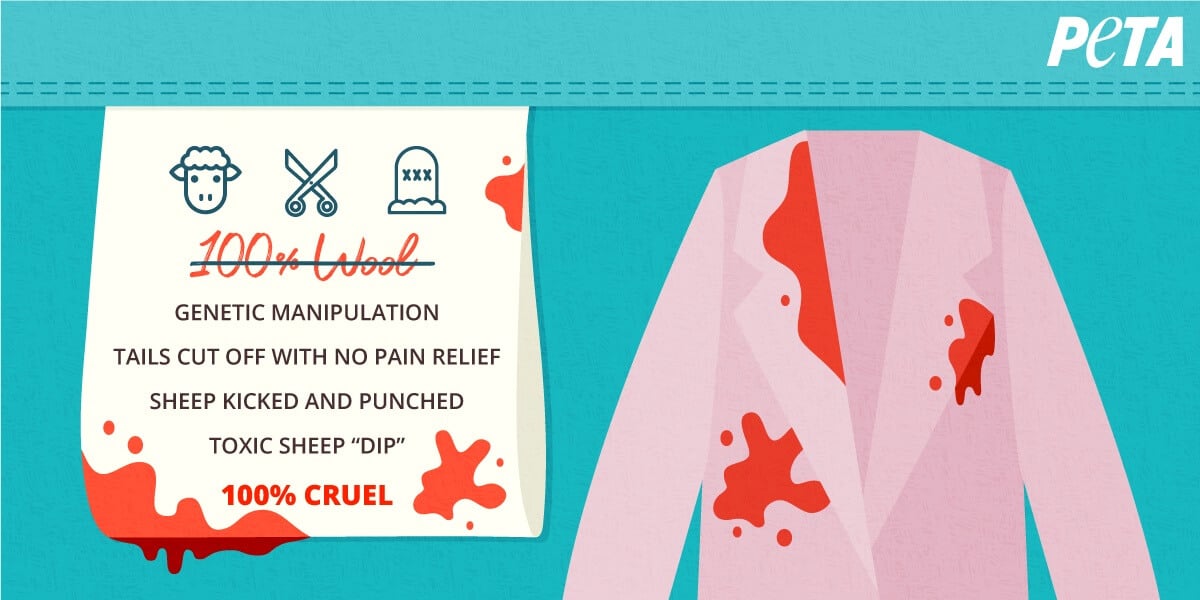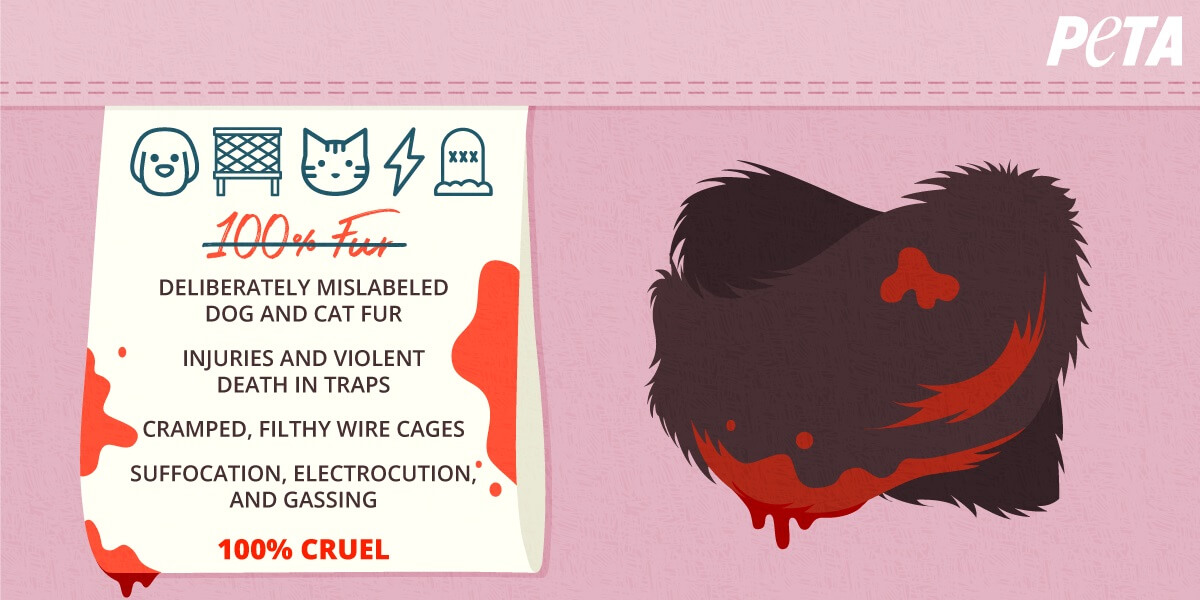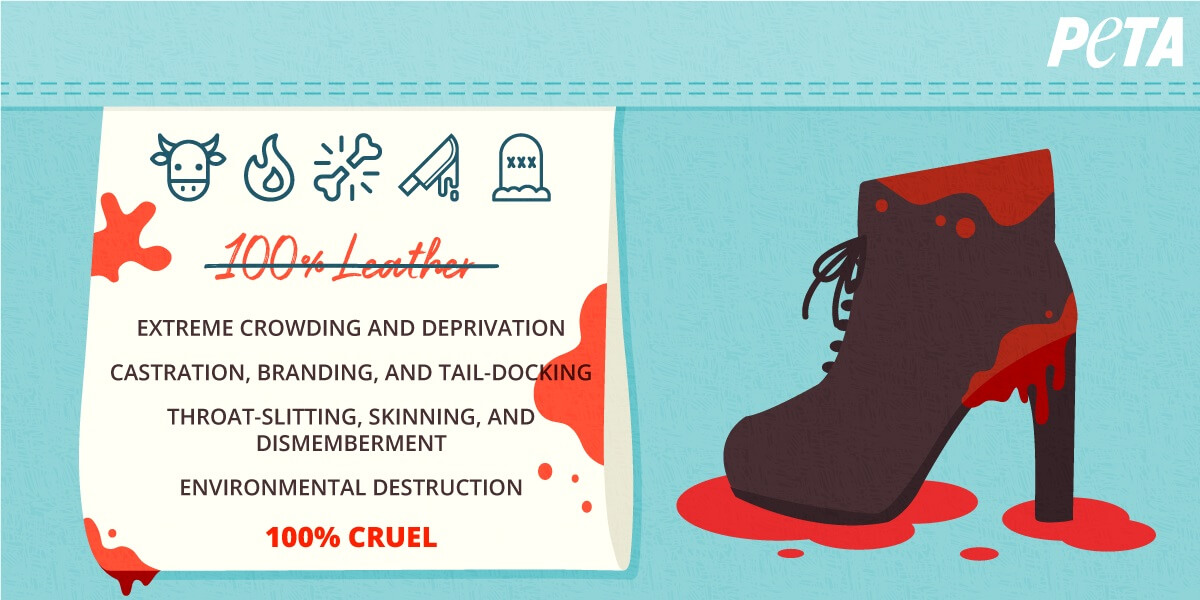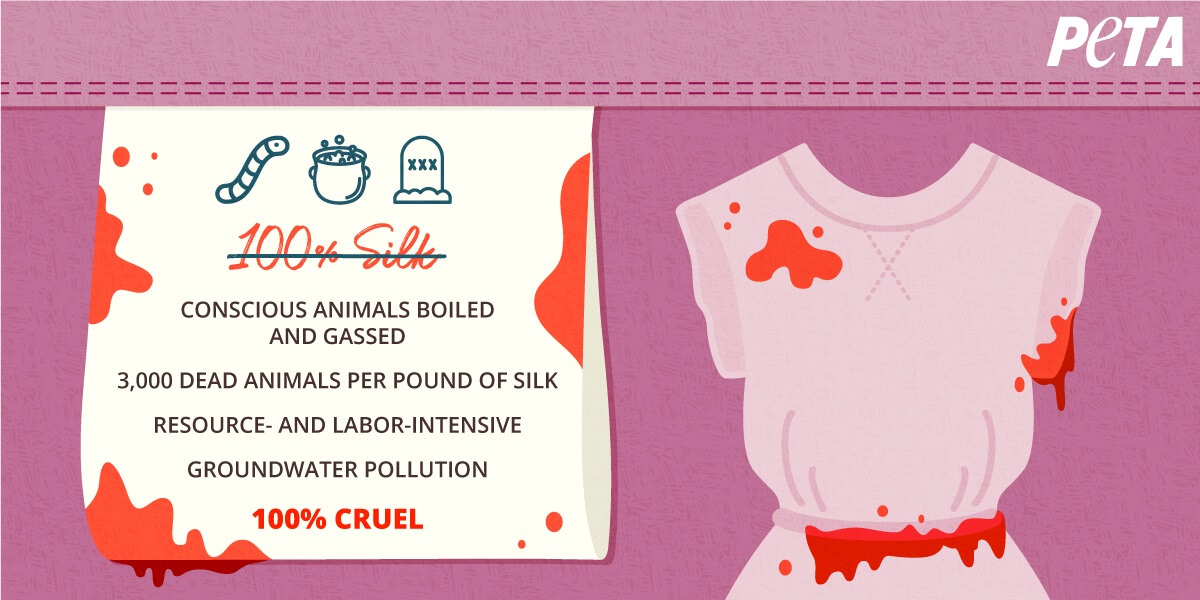Subjecting animals to extreme confinement, skinning them alive, or killing them via electrocution—if clothing tags told customers about the graphic, violent nature of animal-derived materials, would people still buy those items?
If industries that use animals for fashion were transparent, these examples are what tags attached to wool, fur, leather, and silk clothes would look like:
Wool
Sheep are gentle individuals who, like all animals, feel pain, fear, and loneliness. But because there’s a market for their fleece and skin, they’re treated like nothing more than textile-producing machines—and genetically manipulated to produce an unnatural amount of wool.

PETA has released 11 exposés of 99 sheep operations on four continents, revealing systemic abuse in the wool industry. Impatient workers have been caught punching, kicking, and stomping on sheep, some of whom die from their injuries. Studies have shown how sheep “dip”—a toxic chemical used to rid sheep of parasites—can poison neighboring waterways and kill fish. When the animals are no longer profitable to the wool industry, they’re slaughtered
Fur
Most animals in the fur industry spend their entire lives confined to filthy cages before finally being beaten, electrocuted, gassed, or even skinned alive. Animals trapped in the wild (or as we like to call it, their home) can suffer for days from blood loss, shock, dehydration, frostbite, and gangrene or be attacked by predators.

More than half the fur sold in the U.S. comes from China, where millions of dogs and cats are bludgeoned, hanged, bled to death, and sometimes skinned alive for their fur. Fur exported from the country is often deliberately mislabeled, so if you wear any fur, there’s no easy way of knowing whose skin you’re in.
Leather
Millions of cows and other animals killed for their skin endure extreme crowding and deprivation as well as castration, branding, and tail-docking—often without receiving any pain relief. At slaughterhouses, their throats are cut and some animals are even skinned and dismembered while still conscious.

Most leather comes from countries such as Brazil, China, and India, where animal welfare laws are either nonexistent or unenforced. Like fur, leather can come from all kinds of animals and is often mislabeled so that unsuspecting consumers don’t realize who they’re wearing.
Leather contributes to the environmental destruction and massive deforestation committed to grow feed crops. Toxic runoff from farms raising cows for their skin and flesh pollute surrounding waterways, creating oxygen-depleted “dead zones.” Chemicals used in tanning leather also pollute water sources and harm people who work in and live near tanneries. Many die of cancer possibly caused by exposure to toxic chemicals used to process and dye the leather.
Silk
Silk is derived from the cocoons of larvae, so most of the insects raised by the industry don’t live past the pupal stage. Roughly 3,000 silkworms are killed to make a single pound of silk. This means that billions—if not trillions—of them are killed for the material every year. Imagine being completely vulnerable, awaiting a magnificent metamorphosis, only to get violently gassed or boiled alive.

All pieces of clothing made from animal-derived materials are produced using methods that are 100% cruel. But you can help stop the abuse.
Whether it came from an animal on a farm or one who was trapped in the wild, every piece of wool, fur, leather, or silk caused tremendous suffering. In the 21st century, there is absolutely no reason to wear animals when fashionable, eco-friendly, and better-performing vegan materials are readily available.
Refuse to wear any clothing made using the skin or hair of living, feeling beings. Check out PETA’s cruelty-free clothing guide to learn how to wear vegan.





